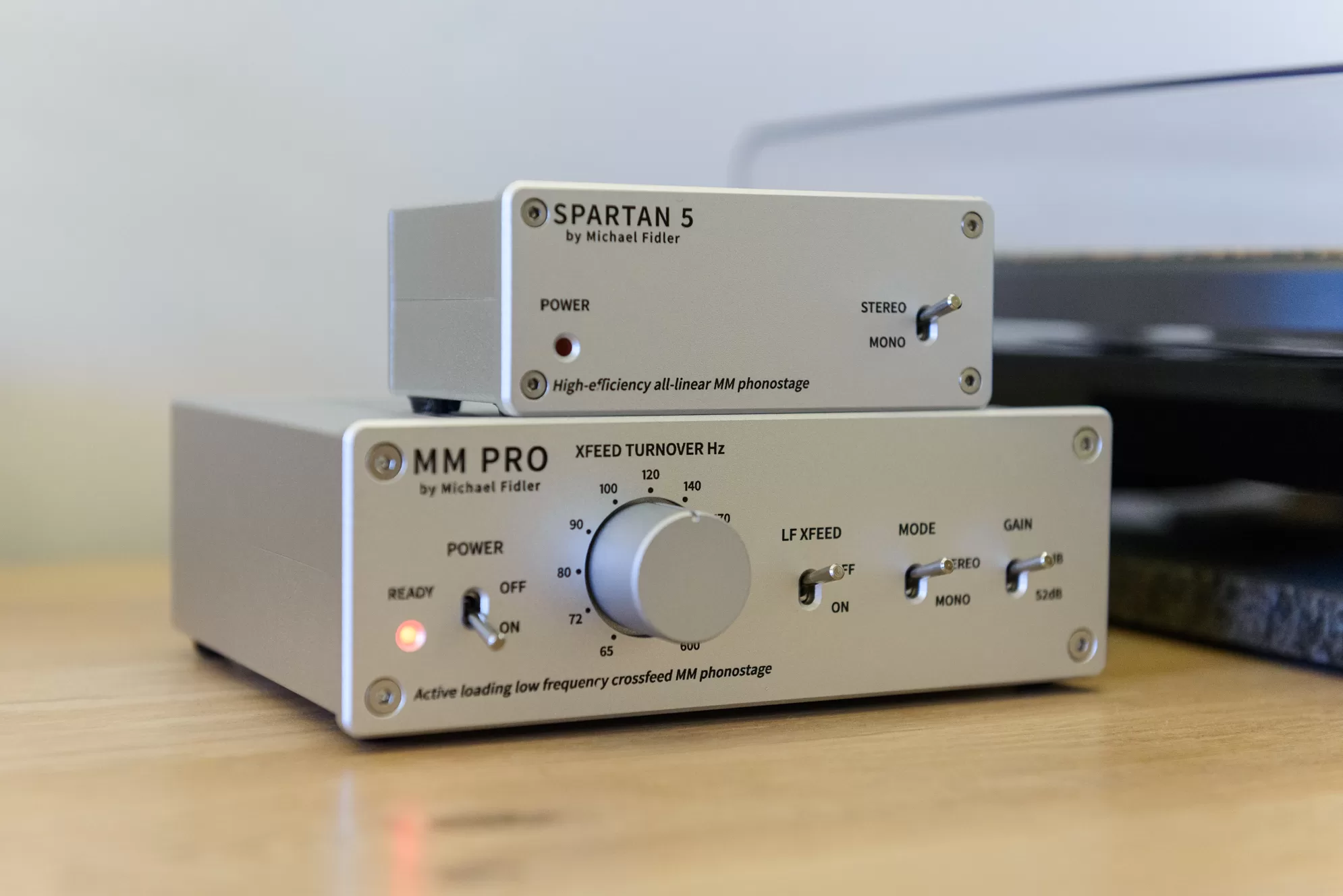Firstly I would like to thank Michael Fidler from Classic Audio Ltd for sending me these samples to review.
These are b-grade/review units and have some slight misprints on the casings.
*disclaimer: These samples were provided on loan for the purpose of writing a review, no incentive was given to write a favourable review. All opinions expressed are my own subjective findings
Gear Used:
Pro-Ject Debut Carbon DC (Acoustand Bearing and Delrin sub-platter upgrade) > Spartan 5 / MM Pro > Marantz PM-66 Ki Signature > Bowers & Wilkins 606
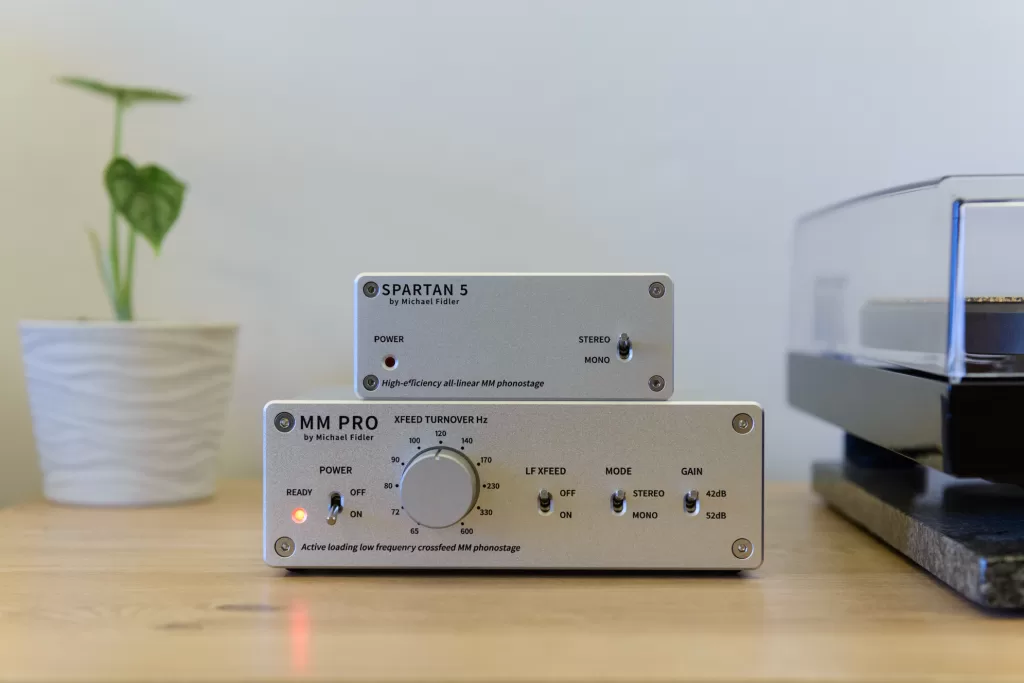
Tech Specs:
MM Pro – https://michaelfidler.com/pro/mm/#3
Spartan 5 – https://michaelfidler.com/spartan/5/#3
About
Michael Fidler wanted to make products that were focussed on performance, that could be measured. His story is far to long for me to write about, but he does go into great detail in the about section of the Classic Audio Ltd website – https://michaelfidler.com/about/
Classic Audio Ltd products are all hand built by Michael in Kent, not too far from where I live in Sussex. It’s great to see a local British brand hand making products, this is how all of the great British audio brands started. A good thing about Michael’s designs is that they use through-hole components. A great many devices now use surface mount parts due to real estate but this means they are more challenging to repair – not Classic Audio Ltd products. These can be repaired, which is excellent in these days of throw away tech, I would like to see more companies adopting this ethos.
Linear power supplies are included as standard with all Classic Audio Ltd products, no need to go and upgrade here. All of Classic Audio Ltd’s pre-amps have +/-0.25dB or better RIAA Accuracy, beating most of the mass-produced phono stages out there.
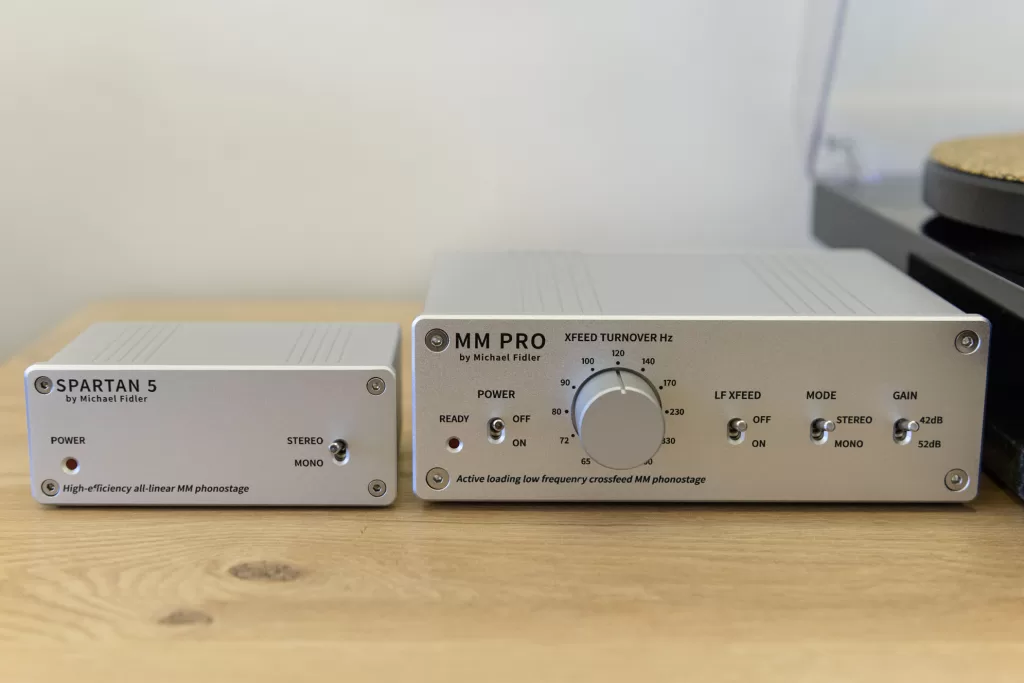
Classic Audio Ltd Spartan 5
Spartan 5 is a more budget oriented phono pre-amp, however don’t let the £150 price tag fool you. Michael uses 1% metal thin film resistors, and matches the capacitors to within 1% in the EQ and subsonic filter sections. When you see the build quality, it really is impressive, a lot of work has gone into the PCB layout and even though the case is more industrial looking, it is solid and feels made to last.
The Spartan 5 includes a second order subsonic filter and a mono switch, the subsonic filter is always active and there is a switch on the front for mono mode. There is no power switch on the Spartan 5, but it is incredibly efficient that there is no need for a switch and the lifespan of the product is not affected by this. It also won’t cost you anything to leave it on (less than £2.20 a year in energy costs in the UK).
The Spartan 5 has the RCA input and grounding post, along with RCA output and the power supply socket all located on the back, it’s a small pre-amp that will happily sit next to your turntable setup (decreasing cable capacitance).
Classic Audio Ltd MM Pro
MM Pro on the other hand comes in at £600, a big jump in price but with quite a few exceptional features. The MM Pro has active loading, triple-stage architecture, variable low frequency cross feed and balanced output – making it’s value proposition rather good indeed.
The MM Pro has adjustable gain, should you have a lower output cartridge, and a mono switch like the Spartan 5. It does have a bigger footprint to house these extra features, but it is still a compact unit and one that really does look lovely sat next to your turntable. Both the inputs and outputs (including balanced XLR) are on the back, with the power switch, mono switch, gain switch, low frequency cross feed switch and variable cross feed frequency knob on the front.
MM Pro has exceptionally low noise, with high SNR allowing you to hear every detail as it should be, this also help when digitising an analogue collection too. It can also handle loud transients without becoming overloaded and clipping, with over 20dB of overload margin for those loud passages.
The 3rd order subsonic filter prevents low frequency disturbances from masking detail without affecting the low frequency output. So you get all the power without the unwanted noise inherent in vinyl playback.
Now on to the variable low frequency cross feed, something that puzzled me for a while. Most vinyl noise, also known as vinyl roar, is present in low frequencies and it often disappears when mono mode is selected. This variable cross feed allows you to cross feed the low frequencies without affecting the stereo separation – explained much better here – https://michaelfidler.com/pro/mm/#6
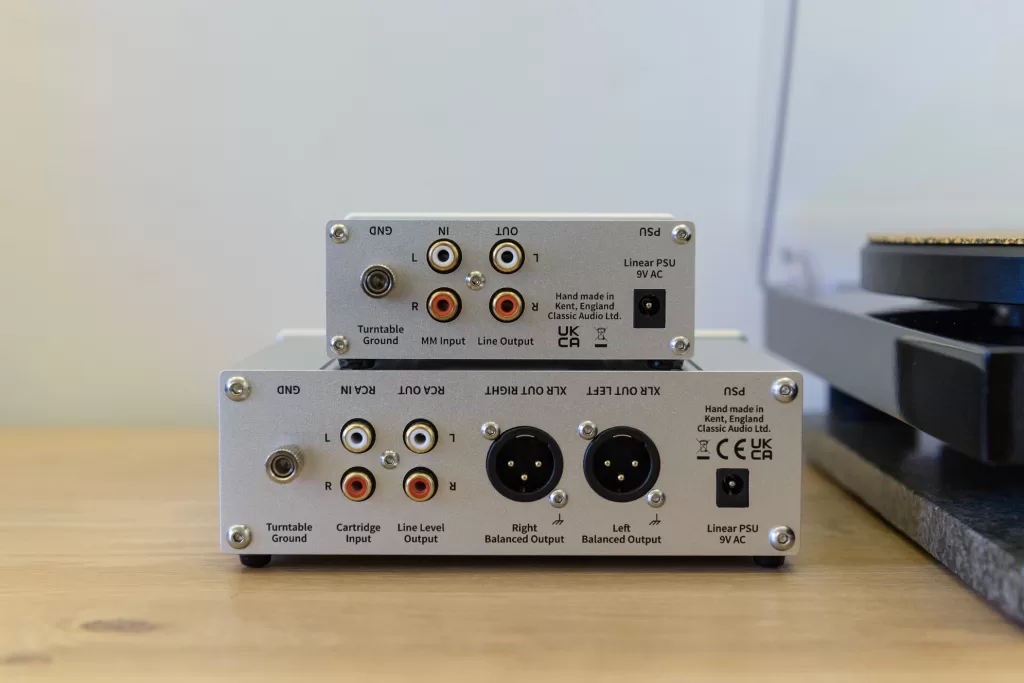
Sound
First of all I have been using a Pro-Ject Phono box for a few years now, and I’ve always thought it just did it’s job of RIAA EQ and amplifying the signal without affecting the sound too much. I’ve tested a few pre-amps over the years and the main difference I have always noticed is pre-amps with a sub-sonic filters tend to sound a little cleaner overall, but all share similar sound characteristics.
Spartan 5
Hooking up the Spartan 5 for the first time I was not sure what to expect to be honest, and after a few days of getting used to it I decided to sit down and evaluate the differences between it and the Phono box. Without sounding too cliché, it was a real ear-opening experience for me, even my partner was shocked at how much of a difference this little pre-amp made. The Spartan 5 is a very clean, clear and detailed pre-amp, it masks nothing and comes across as neutral sounding without any emphasis on any part of the audible spectrum.
The bass whilst seemingly slightly less full than the Phono box, hit with more authority and control, the midrange was open and detailed revealing subtleties I hadn’t realised I was missing out on. The treble was effortless and extended with more air and space compared to the comparatively veiled sound of the Pro-Ject Phono box.
As I mentioned before, I honestly thought the Pro-Ject was an ok little pre-amp and I know that the Spartan 5 is more expensive, putting it up against stiffer competition. But I was not prepared for such a stark difference in sound, the Spartan 5 put the Phono box to shame making it sound veiled and muddy instead of open and clear.
MM Pro
So after hearing this, I was keen to hook up the Classic Audio Ltd MM Pro with the same tracks and listen again. First off the sound difference between the MM Pro and the Spartan 5 is not as big as it was from the Phono box to the Spartan 5, but this is not to say that the MM Pro isn’t worthy of it’s price tag. The MM Pro seems to me to be a little more refined than the Spartan 5, it has a more expansive soundstage and clearer separation that allows to you pick up on even more detail than the Spartan 5.
Whilst not night and day, listening to them side by side you can hear that it sounds just a little more open with subtleties being even easier to pick up on. The midrange is more defined and cleaner, it’s more lifelike and realistic in it’s tonality and there is a bit more air between the different components in the mix. The sound is just so precise, so clean and so effortless that changing to another pre-amp really does highlight what you’ve been missing out on.
There are some added features to the MM Pro that the Spartan 5 misses out on too, like balanced output which is excellent for longer cable runs and the active loading of the cartridge allows for an even lower noise floor. Low frequency cross feed is one of the main features on the front panel so I set about testing this. The cross feed takes nothing away from the excellent sound of the MM Pro, and it’s effect is subtle, but what I found was that having it enabled tightened up the stereo image and made the midrange sound more focussed. Unfortunately, or fortunately, most of my record collection is in quite good condition, and I feel this may have a more audible difference on records that are well played.
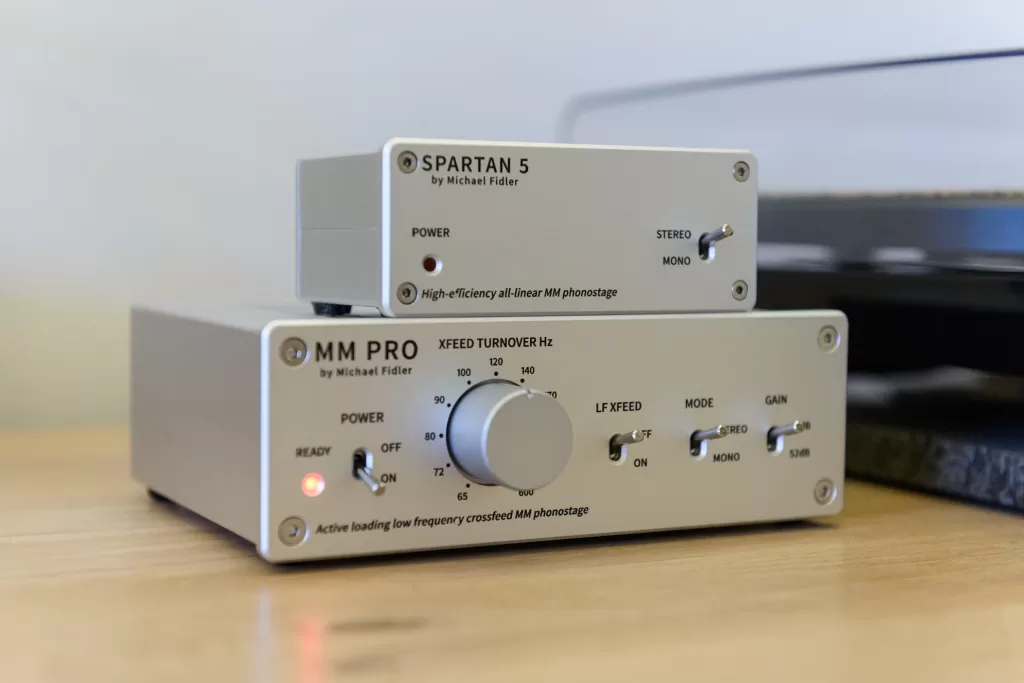
Conclusion
Both pre-amps are exceptionally good for their respective prices, they have such a low noise floor and excellent headroom built in that no matter what material you throw at them they will retain that clean and clear sound. The Spartan 5 is a steal at its current £150 price point, you get a linear and detailed sound with a well implemented subsonic filter and linear power supply. This is likely to be all the pre-amp most listeners will need when using a system like mine.
If however you want something a little more advanced, and the £600 price point is more in line with your setup, the MM Pro is to be marvelled at. It has an effortless sound quality with a pitch-black background, every nuance and detail is presented in an honest way. The cross feed can work wonders to tighten up the stereo image and reduce low frequency roar which can be an issue with certain pressings and setups.
I am really trying hard to find something to not like, as this review is coming across as overly positive, but the only thing I can think of is I would love to see them in black instead of silver – and guess what, Michael is making some batches in black.
Both pre-amps just get out of the way of the music and do what a good pre-amp should, but they do it better than many. Spending time to match components, and designing an optimised circuit really does pay off. If you want colouration, go elsewhere, if you want accuracy and longevity, you cannot go wrong with Classic Audio Ltd.
I honestly didn’t know what I was missing out on before listening to these in my system, plugging my Pro-Ject Phono-box back in makes the system sound broken and lacking dynamics and detail. This is not something I was fully prepared to hear, and I certainly didn’t expect such a stark difference between the pre-amps.

